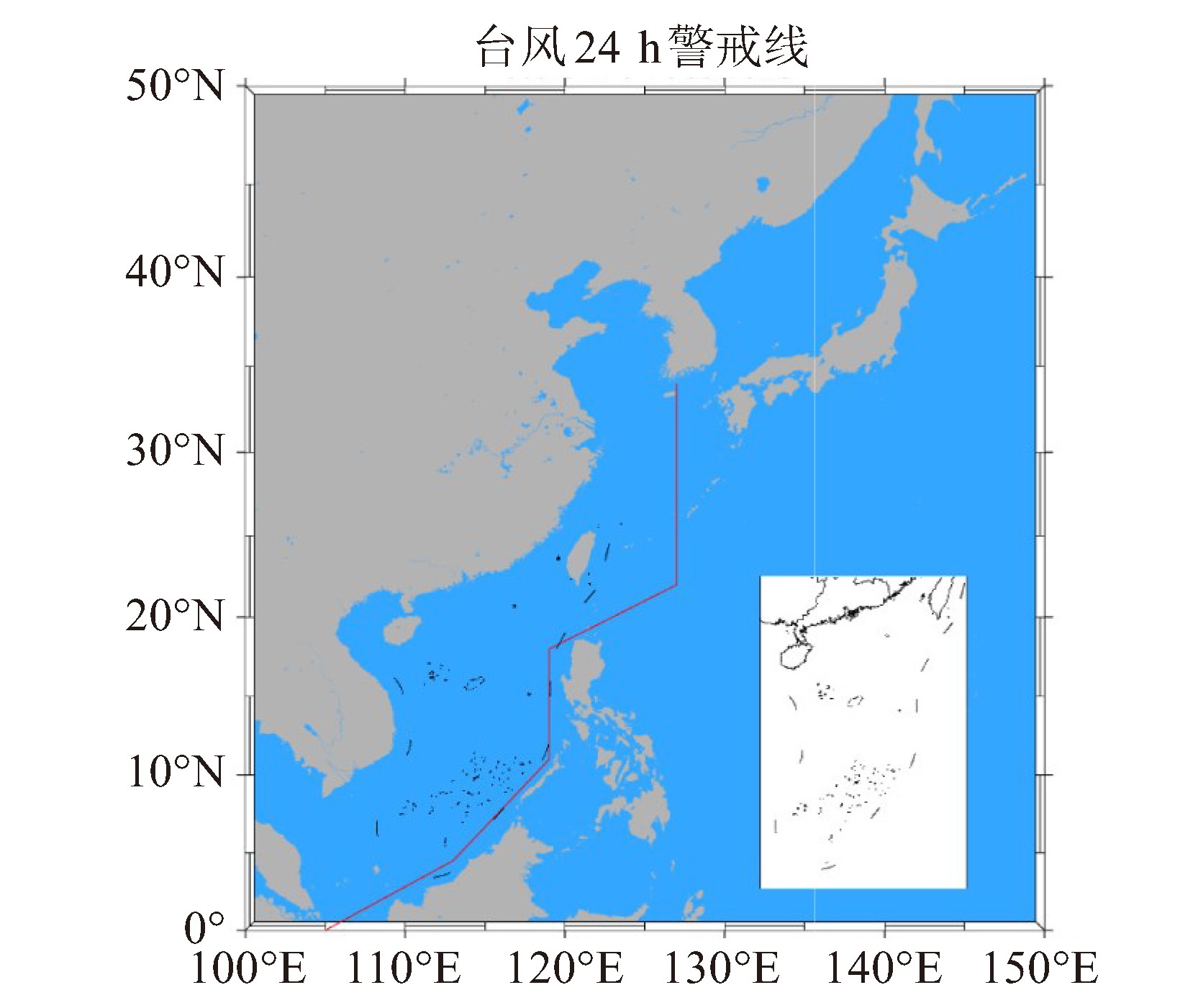Spatiotemporal Evolution Characteristics and Attribution Analysis of Tropical Cyclones Affecting China over the Past 73 Years
-
摘要: 基于1949—2021年中国气象局最佳热带气旋路径数据,以中央气象台24 h台风警戒线为界,分析研究影响我国TC数量、强度、发源地等历史变化规律。结果表明:(1) 1949—2021年平均每年约有15.1个热带气旋影响我国,主要集中在7、8、9三月,不同强度的热带气旋集中的月份略有不同,后几个月份高强度的热带气旋占比更大;(2) 影响我国的TC数量长期来看略有减少的趋势,有比较明显的高峰、低谷期,2017年至近呈现一个下降的趋势;(3) 影响我国热带气旋的发源地,长期变化呈现出西进、北抬的趋势;(4) 影响我国的热带气旋数量与Niño3.4指数有一定的相关性。Niño3.4指数与热带气旋、热带风暴、强热带风暴、台风的数量存在显著的负相关,与超强台风的数量呈一定的正相关;(5) 热带气旋发源地的长期变化趋势与海表面温度的长期变化趋势关系密切,若未来全球气候继续变暖,热带气旋的生成位置可能会继续西进、北抬,届时我国中高纬度地区受其影响可能会越来越频繁。Abstract: Based on the tropical cyclone (TC) best track data released by the China Meteorological Administration for the period from 1949 to 2021, this study analyzed the historical variations in the frequency, intensity, and genesis locations of TCs that crossed the 24-hour typhoon warning boundary established by the Central Meteorological Observatory of China. The results were as follows. (1) From 1949 to 2021, there was an average of about 15.1 TCs affecting China each year, predominantly occurring in July, August, and September. The distribution of TCs of varying intensities differed slightly by month, with a tendency for more high-intensity TCs in the last few months of the year. (2) Over the long term, the number of TCs affecting China exhibited a slight declining trend, characterized by alternating periods of increased and decreased activity. A downward trend has been observed from 2017 to the present. (3) The genesis locations of TCs affecting China have gradually shifted westward and northward over the years. (4) The frequency of TCs affecting China correlated with the Niño 3.4 index. A significant negative correlation was found between the Niño 3.4 index and the number of tropical cyclones, tropical storms, severe tropical storms, and typhoons, while a positive correlation was noted with the number of super typhoons. (5) The long-term trend in the genesis locations of TCs was closely related to the long-term trend of sea surface temperature. Should the global climate continue to warm, the genesis locations of tropical cyclones may persist in shifting westward and northward, potentially leading to more frequent impacts on the mid - to high-latitude regions of China.
-
表 1 Niño3.4指数与台风数量的关系
TC级别 Pearson相关系数 P值 TC -0.29 0.01 TS -0.23 0.05 STS -0.25 0.04 TY -0.30 0.01 STY 0.06 0.64 SuperTY 0.19 0.10 -
[1] 中国气象局. 热带气旋等级标准: GB/T 19201-2006[S]. 北京: 中国标准出版社, 2006. [2] GUAN S D, LI S Q, HOU Y J, et al. Increasing threat of landfalling typhoons in the western North Pacific between 1974 and 2013[J]. International Journal of Applied Earth Observation and Geoinformation, 2018, 68: 279-286. [3] CHEN L S, DING Y H. Introduction to typhoons in the western Pacific[M]. Beijing: Science Press, 1979. [4] YUAN J N, WANG D X, WAN Q L, et al. A 28-year climatological analysis of size paramet ers for Northwestern Pacific tropical cyclones [J]. Adv Atmos Sci, 2017, 24(1): 24-34. [5] 陈敏, 郑永光, 陶祖钰. 近20年(1949-1996)西北太平洋热带气旋气候特征的再分析[J]. 热带气象学报, 1999, 15(1): 10-16. [6] 余帆, 李培, 李向军, 等. 近60年西北太平洋台风年代际变化特征及成因的初步分析[J]. 海洋预报, 2012, 29(1): 1-5. [7] 杨诗琪, 李英, 陈联寿. 西北太平洋热带气旋强度变化的若干特征[J]. 热带气象学报, 2017, 33(5): 666-674. [8] 伍红雨, 吴遥, 张柳红. 7—9月登陆华南热带气旋频数异常与大气环流和海温的关系[J]. 热带气象学报, 2024, 40(2): 169-177. [9] 张冬娜, 张翰, 程旭华, 等. 西北太平洋热带气旋活动的分布及变化特征[J]. 海洋学研究, http://kns.cnki.net/kcms/detail/33.1330.P.20200421.1633.004.htm [10] 唐丽丽, 胡德勇, 李小娟. 1951-2006年西北太平洋热带气旋活动时空特征[J]. 自然科学学报, 2012, 21(1): 31-38. [11] 袁金南, 林爱兰, 刘春霞. 60年来西北太平洋上不同强度热带气旋的变化特征[J]. 气象学报, 2008, 66(2): 213-223. [12] 李真真, 吴立广, 刘青元. 近20 a影响我国台风活动变化趋势[J]. 气象科学, 2016, 36(6): 752-759. [13] 杨吕玉慈, 吴立新. 西北太平洋热带气旋活动的年际变化及其与大尺度背景场的关系[J]. 中国海洋大学学报(自然科学版), 2019, 49 (5): 11-20. [14] YING M, ZHANG W, YU H, et al. An overview of the China Meteorological Administration tropical cyclone database[J]. Atmos Oceanic Technol, 2014, 31(2): 287-301. [15] LU X Q, YU H, YING M, et al. Western North Pacific tropical cyclone database created by the China Meteorological Administration[J]. Adv Atmos Sci, 2021, 38(4): 690-699. [16] RAYNER N A, PARKER D E, HORTON E B, et al. Global analyses of seasurface temperature, sea ice, and night marine air temperature since the late Nineteenth Century[J]. Journal of Geophysical Research: Atmospheres, 2003, 108(D14): 4407. [17] OEY L Y, CHOU S. Evidence of rising and poleward shift of storm surge in western North Pacific in recent decades[J]. J Geophys Res Oceans, 2016, 121(17): 5 181-5 192. [18] LIANG A, OEY L, HUANG S, et al. Long-term trends of typhoon-induced rainfall over Taiwan: In situ evidence of poleward shift of typhoons in western North Pacific in recent decades[J]. J Geophys Res Atmos, 2017, 122(2): 750-2 765. [19] KOSSIN J P, EMANUEL K, VECCHI G A. The poleward migration of the location of tropical cyclone maximum intensity[J]. Nature, 2014, 509(7 500): 349-352. [20] 王相军, 李秋胜. ENSO事件影响下登陆中国热带气旋年际变化特征的分位数回归分析[J]. 热带气象学报, 2022, 38(1): 11-22. [21] PAUL W S, JIAN L, KEVIN M G, et al. Re-examining tropical expansion[J]. Nature Climate Change, 2018, 8(9): 768-775. -






 下载:
下载:














 粤公网安备 4401069904700003号
粤公网安备 4401069904700003号